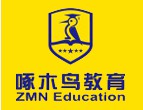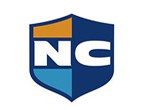2025托福听力真题解析:AI艺术争议点+核心考点拆解
报名、考试、查分时间 免费短信提醒
托福听力想要高效提分,建议遵循以下练习步骤:
完整做题后核对答案;
深度分析错题(标注对应段落、信号词、核心词,梳理核心词与正确选项的同义替换,明确错题原因如段落理解偏差、逻辑判断错误等);
整理并背诵听力中的生词;
精听并跟读错题对应的关键句子;
泛听讲座1-2遍,强化语感。
托福听力想要高效提分,建议遵循以下练习步骤:
完整做题后核对答案;
深度分析错题(标注对应段落、信号词、核心词,梳理核心词与正确选项的同义替换,明确错题原因如段落理解偏差、逻辑判断错误等);
整理并背诵听力中的生词;
精听并跟读错题对应的关键句子;
泛听讲座1-2遍,强化语感。
第一步:听题做题(真题题目)
What do the speakers mainly discuss?•A How the student can select courses for next term that he will enjoy•B An idea that the student has for a new painting•C Ways to use artificial intelligence to create art•D A recent campus art competition and its results
Why does the professor mention museums?•A To signal that she wants to change the focus of the conversation•B To encourage the student to broaden his ideas about how art becomes meaningful•C To emphasize the value of exhibiting related artworks in the same space•D To suggest a way for the student to get inspiration
What points do the speakers make about an AI artwork that depicts a mountaintop?(多选)・A It took 80 hours to create.・B It was made by a person who did not train as an artist.・C It violated the rules of the art competition.・D It was made with the help of a computer science professor.
What is the student's attitude toward AI art?•A He is not sure whether it should be labeled as"AI-generated."•B He is upset that it was allowed into a traditional art competition.•C He is curious about incorporating it into his own work.•D He is impressed by the skills and experience needed to make it.
At the end of the conversation,what does the professor suggest the student do?•A Think about how to invent his own artistic technique•B Submit his work to another competition•C Take a course to learn how to create digital art•D Study Jason Allen's artwork more closely
参考答案:D、B、(A/B)、B、C
第二步:真题原文与生词整理
[00:00:00]Narrator:Listen to a conversation between a student and his art professor.
[00:00:06]Professor:Hello,Maxim.What brings you in today?Well,are you still trying to finalize your course selection for next term?Since you've completed all the requirements,you can start to explore your interests more.
[00:00:17]Student:Actually,I'm not really in the mood to talk about that.You know,I entered a painting in the university's art contest.Did you see the results?
[00:00:26]Professor:Oh,yes.That's right.You got second place.I say congratulations,but you don't seem excited.
[00:00:34]Student:I put a lot of time and effort into my painting.And then someone gets first place for something generated with AI,with artificial intelligence.He used software where you enter the description of an image,and artificial intelligence generates art for you.
[00:00:50]Professor:I see.Well,did you see the piece?What did the judges say was good about it?
[00:00:56]Student:Yeah.I mean,the final image was really beautiful—a hazy,ethereal scene of people standing on a mountaintop gazing at the moon.
[00:01:06]Professor:But.
[00:01:07]Student:But what does the painting mean?If it's AI generated,there's no message,no intention behind it.
[00:01:14]Professor:But where does an artwork's meaning really come from?Art doesn't exist in a vacuum.In fact,it's often displayed in museums where thousands of people will see it.And each museum goer brings a unique set of experiences to that artwork.When you visit a museum,you have a personal response to the art,right?
[00:01:36]Student:Yeah.But I think that with AI art,that response is only skin deep.Jason Allen,the guy who made the piece,isn't even an artist.He's a computer scientist.
[00:01:48]Professor:Well,it's the first time this contest has been held,and the art department only decided to organize it two months ago.Not a lot of time to prepare.The rules of the competition could have been better thought out.But the fact is that the use of artificial intelligence is not excluded.According to the school newspaper,Jason spent 80 hours tweaking hundreds of phrases until he came up with the right combination.AI created the image,but the process was directed by a human.I suppose you know the art department subscribes to AI software for our digital arts courses.That includes one of my courses,Digital Art 301.I would love to see you there.
[00:02:33]Student:I'm too much of a purist.Alan used some creativity,but it takes more than creativity to be a real artist.You need to know how to paint or draw or sculpt.
[00:02:45]Professor:That's been true historically,but it can't hurt to get more understanding,perhaps with some hands-on experience.You'll appreciate it more.
[00:02:55]Student:I don't know.
核心生词整理
artificial intelligence(AI):人工智能
hazy:朦胧的,模糊的
ethereal:轻盈的,缥缈的
tweak:调整,修改
purist:纯粹主义者
hands-on experience:实践经验
subscribe to:订阅,使用(软件/服务)
第三步:真题考点与错题解析
1.主旨题(第1题)
考点核心:把握对话核心话题,排除细节干扰项。
解析:对话开篇学生提及校园艺术竞赛结果,随后围绕AI艺术作品获一等奖展开争议,全程聚焦竞赛相关讨论。A选项“选课”是教授开篇提及的次要话题,B选项“新画作想法”未涉及,C选项“AI创作艺术的方法”并非对话核心,仅为争议背景,因此D为正确答案。
2.功能题(第2题)
考点核心:理解说话人提及特定话题的隐含目的。
解析:学生质疑AI艺术缺乏深层含义,教授提及博物馆是为了说明艺术的意义并非仅来自创作者的意图,还来自观者的个人体验,以此引导学生拓宽对艺术意义的认知。A选项“转移话题焦点”、C选项“强调展览价值”、D选项“建议获取灵感”均不符合语境,B为正确答案。
3.细节多选题(第3题)
考点核心:捕捉对话中关于特定事物的关键信息,注意同义替换与细节匹配。
解析:关于山顶主题的AI作品,对话提到创作者Jason是计算机科学家(未接受艺术训练,对应B选项),且花费80小时调整描述语句(对应A选项);C选项“违反竞赛规则”错误,教授明确说明竞赛未禁止AI使用;D选项“借助计算机科学教授帮助”未提及,因此正确答案为A、B。
4.态度题(第4题)
考点核心:通过学生的语气、用词判断其对核心话题的态度。
解析:学生表示自己为画作投入大量时间精力,却不敌AI作品,且多次质疑AI艺术缺乏意义、创作者并非真正的艺术家,可见其对AI艺术获准参与传统艺术竞赛感到不满。A选项“不确定是否该标注AI生成”、C选项“好奇融入自身创作”、D选项“赞赏所需技能经验”均与学生表述矛盾,B为正确答案。
5.建议题(第5题)
考点核心:识别教授的建议类表达,锁定结尾处的关键信息。
解析:对话结尾教授提到自己的“数字艺术301”课程使用AI软件,邀请学生参与,即建议学生学习数字艺术创作课程。A选项“发明自己的艺术技巧”、B选项“提交作品到另一竞赛”、D选项“深入研究Jason的作品”均未被提及,C为正确答案。
以上就是关于《2025托福听力真题解析:AI艺术争议点+核心考点拆解》介绍。爱思学,您的教育规划师,提供全国托福培训机构课程免费试听,快速了解费用明细,排名、校区地址,欢迎咨询预约400-808-1765。











